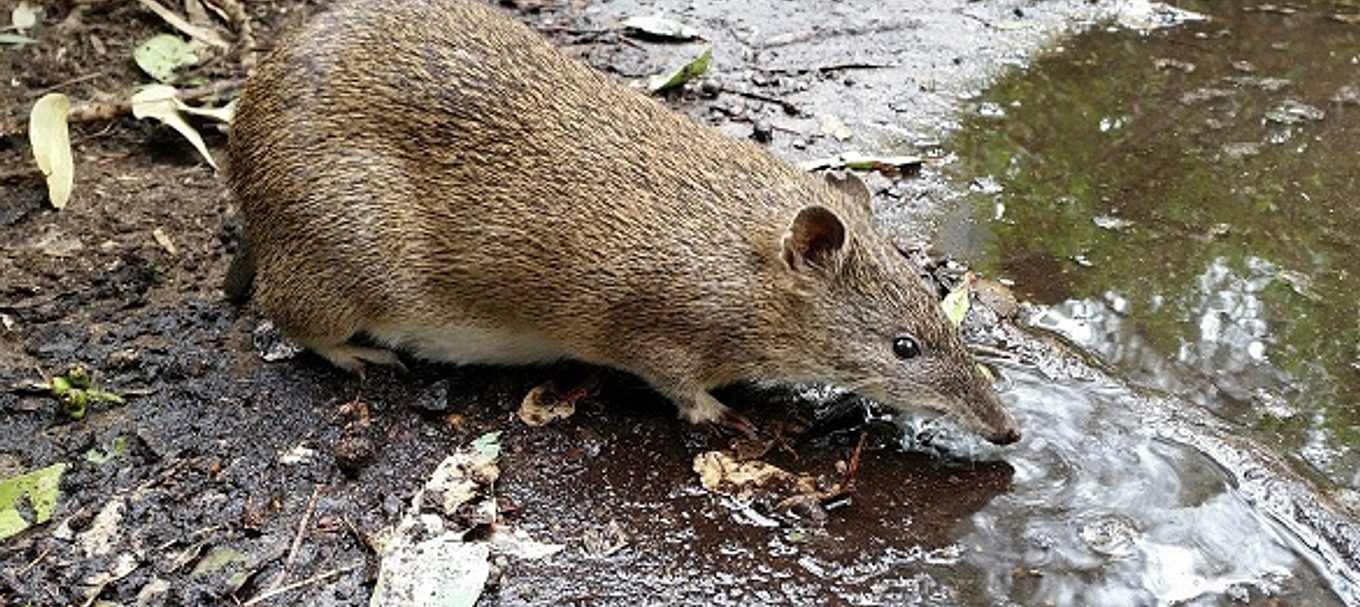
How to attract bandicoots to your backyard
There were once eight bandicoot species in South Australia, but the southern brown bandicoot is now the only one remaining. Spotting these rat doppelgangers is extremely rare because they are endangered.
The good news is, the southern brown bandicoot is making a comeback in the Adelaide Hills – they’ve been spotted in Kuitpo Forest and more recently in a backyard in Crafers.
Who wouldn’t want this guy for a housemate?
If you wouldn’t mind a bandicoot as a tenant in your backyard, here’s some things to consider to make your backyard as attractive as possible.
They like a lot of room
It’s important to remember that one bandicoot needs a lot of room – up to 6 hectares. That’s one of the reasons why these guys are in trouble because there is simply not enough habitat to support groups of them.
Don’t let that put you off though – making your backyard bandicoot-friendly could contribute to the bigger picture – the key is to think about how your backyard connects to your neighbours and nearby parks.
Read about how 19 landholders are making their properties bandicoot-friendly.
They like diverse habitat
The main habitat types that bandicoots are found in are stringybark eucalypt forests and woodlands with dense shrubs and understorey that offer protection from predators. This means less trees, and more plants up to 3 metres high.
When it comes to a potential pad, bandicoots like diversity. They’re usually found in places where the understorey – think plants no higher than 1m – is made up of up to seven different plant species for every square metre.
To put that into perspective, for every tree there’s generally 500 understorey plants.
Don’t worry though, you don’t need to fit 500 plants in your yard to make a difference.
Some bandicoot-approved understorey plants are the bearded heath (Leucopogon concurvus), common fat-pea (Platylobium obtusangulum), wire rapier-sedge (Lepidosperma semiteres), silky Guinea-flower (Hibbertia sericea) and shrub violet (Hybanthus floribundus).
Fun facts: these ‘ecosystem engineers’ excel at digging which is great for your backyard’s soil health. Also, bandicoot poo is also very good for soil health and trees and can also reduce the risk of fire.
Bigger isn’t necessarily better
Shrubs – plants between 1m and 3m high – are just as important as your understorey plants. And it’s important to remember they don’t need to be big and bushy.
A few good options to consider are heath wattle (Acacia myrtifolia), silver banksia (Banksia marginata), large-leaved bush-pea (Pultenaea daphnoides), yacca (Xanthorrhoea semiplana) or hakea (Hakea carinata).
Make sure you research what species would best fit your garden. Consider the height, width, root depth and spread.
Keep in mind that some of these plants aren’t that easy to grow and are a little hard to find, so you might need to look around for a nursery that will provide them. State Flora is a great place to start.
Transforming your garden to a native wonderland won’t just benefit wildlife either – native plants generally need less water, less fertiliser and less looking after in general.
They’re OK with messy housemates
Not the neatest person on the block? You don’t need to keep your garden neat and tidy to entice bandicoots. In fact, a good bandicoot habitat generally has dead plants and fallen branches to provide protection for these furry marsupials.
They aren’t going to be best friends with your cat
Keep in mind that ‘Mittens’, ‘Simba’ or ‘Tigger’ are a threat to any bandicoot that comes into your backyard – and it’s best to keep your cat indoors to keep your wildlife visitors safe.
Other things to keep in mind
If you’re lucky enough to live on a property with a decent patch of scrub, maintaining that potential bandicoot habitat is the best thing you can do.
Bandicoots become vulnerable when the understorey is opened up, so reducing grazing pressure (if you have stock) can help keep them safe. Plus, it might even allow native plants to naturally regenerate.
If you spot one in your area, contact our threatened wildlife team to help inform them about new sightings of this endangered species.
If you’re interested in attending a Backyards for Bandicoots workshop, keep an eye on the Adelaide and Mount Lofty Ranges Natural Resources Management Board Facebook page or the events tab on their website. You can also join the Bandicoot Recovery Action Group to help with conservation efforts.
You can read more about making your backyard bandicoot-friendly by downloading thisfact sheet. And if you’re interested in attracting other species to your garden, check out our posts aboutbirdsandnative bees.
Main image: Crafers resident John Nichols in his backyard with asouthern brown bandicoot.





